The Parker-Fersen Mansion
Introduction
Text-to-speech Audio
The Parker-Fersen Mansion, designed by architect Frederick Sexton in 1908, is to this day one of the most extravagant residences in Seattle’s Capitol Hill neighborhood on acclaimed street, ‘Millionaire’s Row’. Bordering Volunteer Park, the home was originally owned by a local businessman turned prisoner, George H. Parker who was arrested for his role in a financial embezzlement scheme. Parker lived there with his wife Evvie and their four children. When Parker died in a fishing accident, Evvie Parker sold the home to a Russian baron, and oldest son of Russian Empress Maria Alexandrovna, Eugene Fersen. Fersen used the property as headquarters for his religious organization “The Lightbearers” that he created in Russia after his estates in St. Petersburg were seized by the Bolsheviks. The mansion’s grandeur attracted Fersen with its grand columns and balconies overlooking the Park. In 1987, the mansion was sold to David and Ruth Walsh McIntyre whose goal was to reinstate the historic estate’s original design after Fersen covered its wall with a glued on cheap red velvet: an ode to Russian royalty. After much construction and design, the McIntyre’s were able to renovate the mansion to appear as similar to its original layout and design as possible.
Images
Born in 1858, George H. Parker was the original owner of the Parker-Fensen mansion. After being convicted of embezzlement, he spent a year in jail to then be pardoned by the Washington State governor. After dying in a fishing accident, Parker’s residence was given to his wife who later sold it.
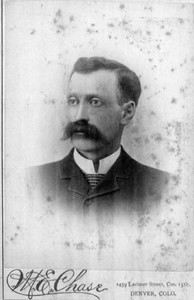
George Parker immigrated to the States from Canada in 1870, and met a woman from Iowa named Evvie whom he later married on December 31, 1881. After living in Colorado, they soon moved to Seattle in 1907. Pictured are George and Evvie Parker.
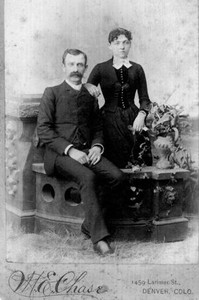
George and Evvie Parker with their children Charles, Frank, George, and Alice.
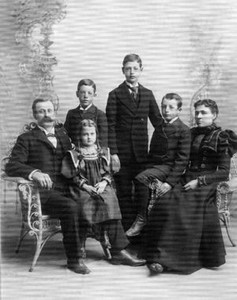
Russian baron, and son of Czar Nicolas II, Eugene Fersen is pictured on the cover of one of his many religious teachings from the philosophical/religious group he founded, “The Lightbearers”. Fersen bought the Parker’s old residence and turned it into the headquarters for his religious group, and was famously known to have covered the home’s interior with cheap red velvet that future buyers had to restore.

The well-known Seattle based architect, Frederick Sexton. Sexton envisioned and oversaw the building of the Parker-Fersen mansion. Among others, one of Sexton’s most well-known work is the University of Puget Sound’s Main Building in Tacoma.
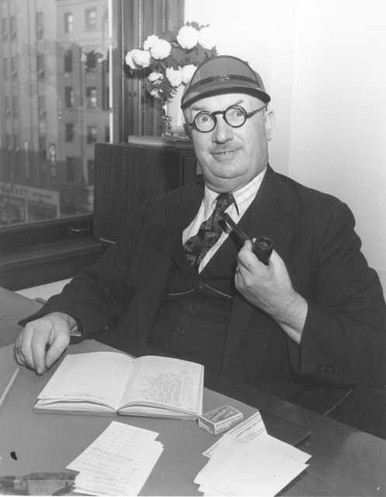
A side view of the Parker-Fersen mansion. This view emphasizes the home’s grandeur. With a multitude of columns and balconies, 1409 E Prospect Street remains one of Seattle’s oldest and finest residences to date.
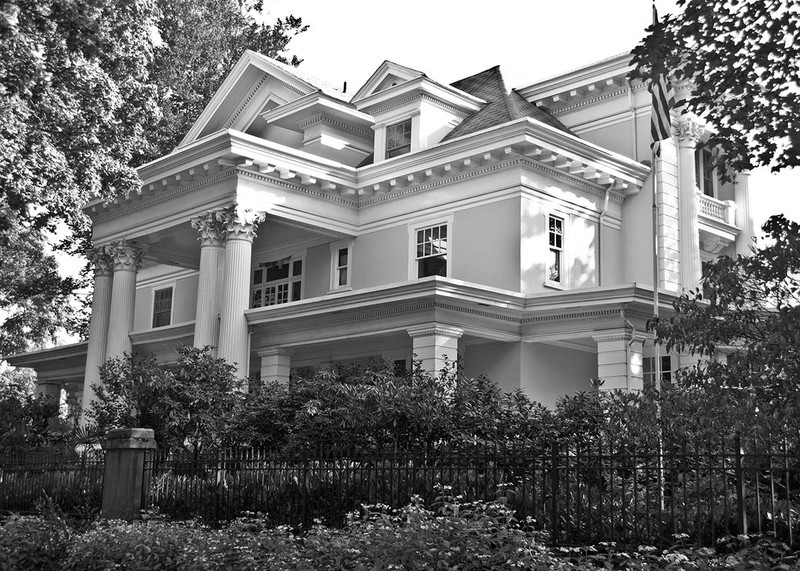
A frontal view of the estate highlighting its grand white columns and entryway. The original architect, Frederick Sexton, was known for creating lavish residences: much of what attracted George Parker to buy the home.
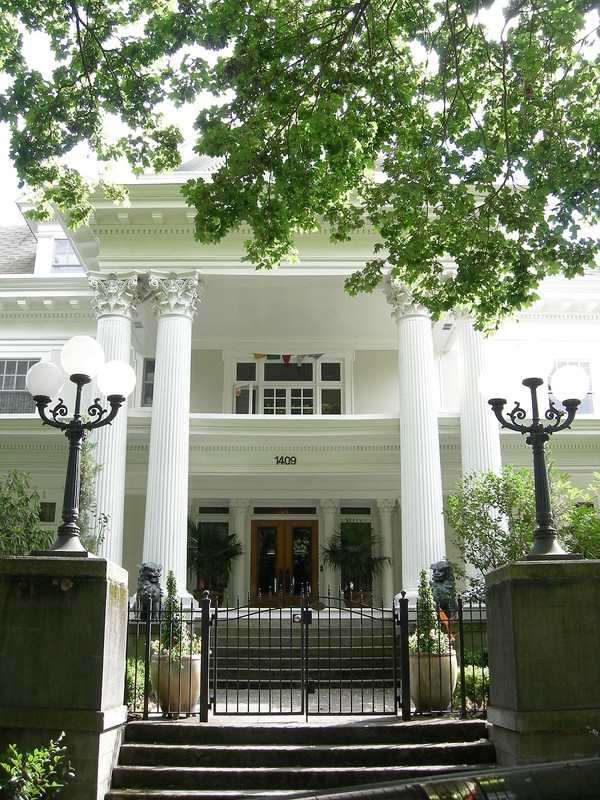
A modern recreation of an old photograph of the Parker-Fersen mansion, emphasizing its grandeur.
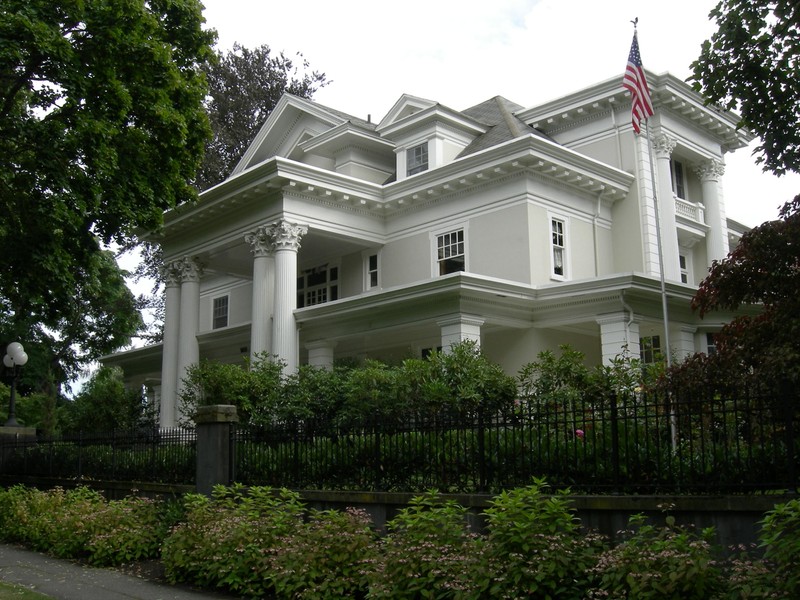
Backstory and Context
Text-to-speech Audio
Capitol Hill is home to some of Seattle’s oldest and most lavish residences: but a particular street coined “Millionaire’s Row” holds far more than your average one. True to its name, Millionaire’s Row was home to some of Seattle’s wealthiest lumbers, lawyers, and as its official website notes other ‘notable citizens’[1]. Some of these residents include Nathan Eckstein—in which Eckstein Middle School is named after—as well as George Parker: the buyer of a $100,000 home on the southernmost edge of Volunteer Park, now known as the Parker-Fersen mansion which is still lived in as a private residence today.
With an abundance of grand, white columns and balconies, the Parker-Fersen mansion was designed by renowned architect Frederick Sexton who finished the project in 1908. Sexton was known for other work such as Tacoma’s Puget Sound University Main Building in 1903 and the Mueller Wholesale Block in Pioneer Square.[2] Sexton oversaw the building of the historic Parker-Fersen mansion: double hung windows, Neo-classical embellishments, and details to emphasize the wealth of the owner are copious in the mansion’s design.
George Parker, the original owner of the home, was known to be greedy with his wealth, which is clear in his home’s extravagant design. This greediness was short lived when the Seattle Post Intelligencer reported on August 31, 1911 that “Parker, high financier of the get-rich-quick wireless scheme, landed on McNeil Island yesterday and began his sentence of two years. His identity as a man of wealth, skillful salesman of worthless stock and suave and convincing promoter will be lost for that length of time and he will be known as No. 2040.” [3] Now that George Parker was imprisoned, his wife Evvie and their four children planned to live without their father and husband. After only spending one year in prison, Parker was pardoned by the Washington State governor; this was documented by the governor verbalizing that Parker had “a crooked partner, and a bad lawyer.” [4] Once released from McNeil Island, Parker and his family began their normal lives again. This however, became Parker’s downfall. On a seemingly standard day, Parker set out to go fishing in Arlington, Washington.[5] An accident occurred, and Parker died. After his tragic death, Parker’s wife sold their home to a Russian man named Eugene Fersen in 1929.[6]
Eugene Fersen was known to love homes near parks: his London, Paris, and St. Petersburg properties all bordered parks. Kitty corner to Capitol Hill’s Volunteer Park, Fersen was immediately attracted to the Parker’s old residence. Fersen, who previously lived in Russia, was the son of Czar Nicolas II. After his St. Petersburg estate was seized by the Bolsheviks, Fersen moved his assets to Capitol Hill.[7] Once settled in the United States, Fersen brought his religious organization “The Lightbearers” with him. The official Lightbearer’s website describes their mission as “We live to see people enlightened with the love of Christ and equipped to bear that light to others as effective disciple-making disciples.”[8] (To learn more about the Lightbearers religious organization, visit https://www.lightbearers.org/about/). The Parker-Fersen mansion was known to be the official headquarters for the Lightbearers religious organization for the next 40 years.
The mansion later sold to David and Ruth Walsh McIntyre in 1987. After buying the property, the McIntyre’s soon discovered the Russian baron covered much of the home’s original décor with cheap red velvet that he glued onto the walls. With the intent of restoration, the McIntyre’s committed themselves to renovating the historic landmark to mimic Sexton’s original work. [9]
[1] “Parker-Fersen Mansion.” Seattle's Millionaire's Row. Accessed April 17, 2020. https://www.millionairesrow.net/houses.html.
[2] “Frederick A. Sexton.” PCAD. Accessed April 17, 2020. http://pcad.lib.washington.edu/person/2749/.
[3] Kreisman, Lawrence. “A Capital House For Capitol Hill -- The New Owners Restore A Colonial Revival On Seattle's Old Millionaires' Row.” The Seattle Times. The Seattle Times Company, April 7, 1996. https://archive.seattletimes.com/archive/?date=19960407&slug=2322825.
[4] “George H. Parker.” WikiTree, April 4, 2017. https://www.wikitree.com/wiki/Parker-22958.
[5] Ibid.
[6] Kreisman, Lawrence. “A Capital House For Capitol Hill -- The New Owners Restore A Colonial Revival On Seattle's Old Millionaires' Row.” The Seattle Times. The Seattle Times Company, April 7, 1996. https://archive.seattletimes.com/archive/?date=19960407&slug=2322825.
[7] “Parker-Fersen Mansion.” Seattle's Millionaire's Row. Accessed April 17, 2020. https://www.millionairesrow.net/houses.html.
[8] “Light Bearers Is...” Light Bearers. Accessed April 17, 2020. https://www.lightbearers.org/about/.
[9]Kreisman, Lawrence. “A Capital House For Capitol Hill -- The New Owners Restore A Colonial Revival On Seattle's Old Millionaires' Row.” The Seattle Times. The Seattle Times Company, April 7, 1996. https://archive.seattletimes.com/archive/?date=19960407&slug=2322825.
Sources
“Frederick A. Sexton.” PCAD. Accessed April 17, 2020. http://pcad.lib.washington.edu/person/2749/.
“George H. Parker.” WikiTree, April 4, 2017. https://www.wikitree.com/wiki/Parker-22958.
Kreisman, Lawrence. “A Capital House For Capitol Hill -- The New Owners Restore A Colonial Revival On Seattle's Old Millionaires' Row.” The Seattle Times. The Seattle Times Company, April 7, 1996. https://archive.seattletimes.com/archive/?date=19960407&slug=2322825.
“Light Bearers Is...” Light Bearers. Accessed April 17, 2020. https://www.lightbearers.org/about/.
“Parker-Fersen Mansion.” Seattle's Millionaire's Row. Accessed April 17, 2020. https://www.millionairesrow.net/houses.html.
